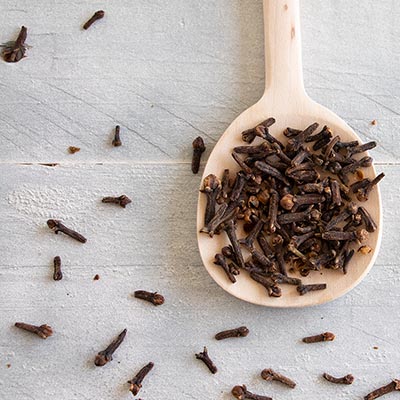Like the nutmeg trees, the cloves trees come from the Moluccas, or Spice Islands, where they are still cultivated today. Carnations first appeared in China, shortly afterwards in India. Around the 4th century, they were first mentioned in European writings. When the Dutch secured the clove monopoly in the 16th century, the spice finally reached Europe.
Since the trees thrive best in the tropical sea climate, carnation trees are now common in Java, the Philippines, Sri Lanka, Madagascar, Réunion, Mauritius, Zanzibar, Pemba, some West Indies and Grenada.
Cloves trees are grown from seeds, rarely from cuttings and cultivated in plantations. They begin to bear their first flowers in the 6th year. Yields increase up to the 20th and 25th year and then fluctuate between 2 and 4 kilograms per tree annually. As soon as the still tightly closed buds of the clove tree change color, they are picked. It is harvested twice a year. The buds are spread out on grass mats for several days to dry until they have changed color from reddish to a deep brown-red.1000 kg of fresh buds produce about 250 kg of dried cloves.
The cloves tree from the myrtle family reaches a height of 20 metres, but usually remains smaller and turns about 100 years old. At the tips of the branches, numerous flower buds stand in cyme umbels. The buds are 12 to 18 mm long and have a 3 to 4 mm thick, stylish ovary with a spherical head. The buds change from green to pink. Before the buds flower, they are harvested.
Flavour of Cloves
Clove contains up to 25% essential oil, which consists essentially of eugenol. The clove also contains fatty oil and tannins.
Cloves taste sweetish-spicy. The warm taste brings them quickly into connection with Christmas, as well as the intense aromatic scent.
Usableness of Cloves
Cloves are classically used in the preparation of sauerkraut or red cabbage and without cloves is a mulled wine, not mulled wine. Christmas cookies, gingerbread and desserts such as compote and groats also benefit from the warm clove aroma. We recommend to cook whole cloves during the preparation of the dishes, but to remove them before serving.



















